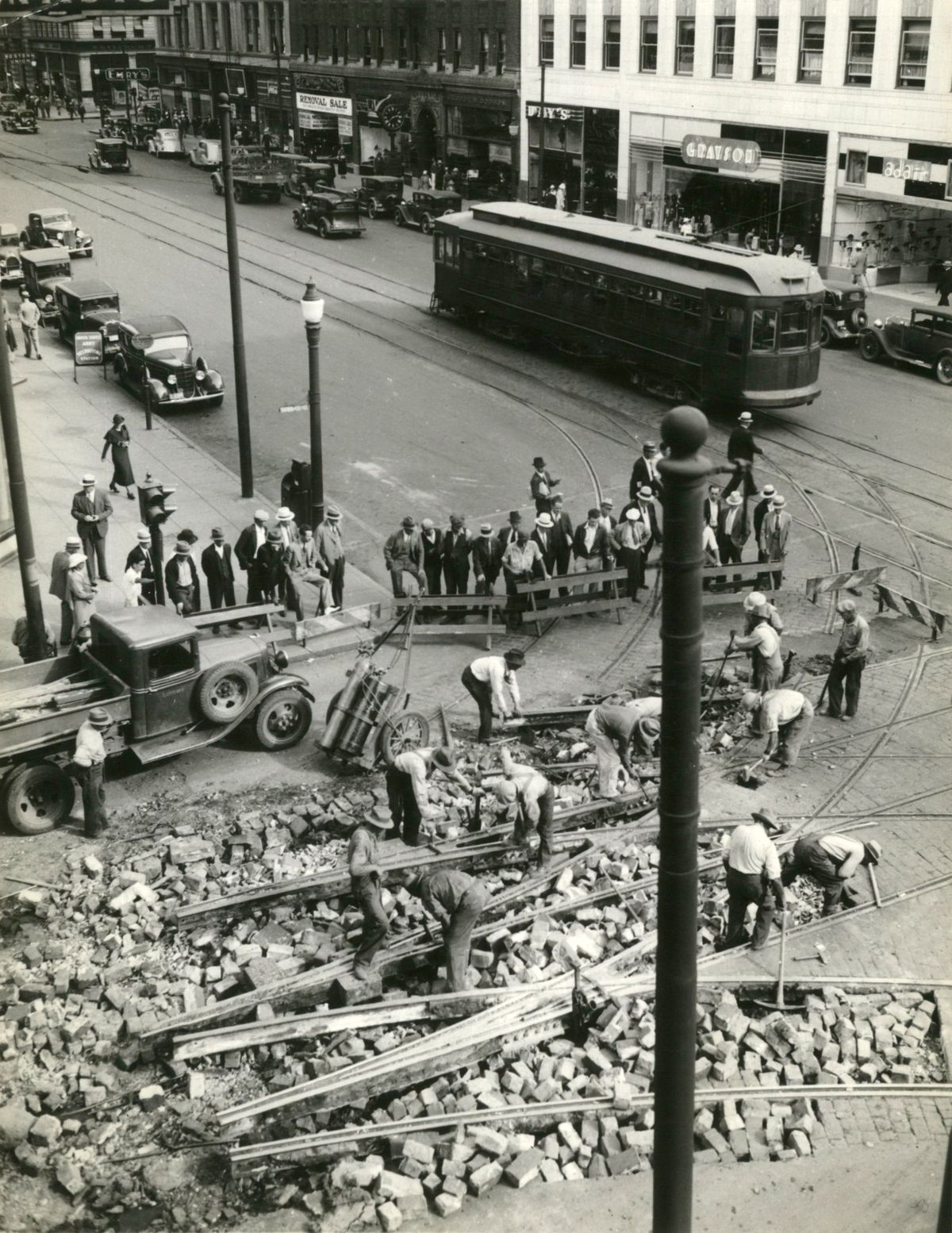Then and Now: Removing streetcar tracks

Spokane had an early mass transit system that was fueled by hydroelectric power and multiple streetcar services, going back to 1887.
When the first electric streetcars appeared, they were powered by new utility company Washington Water Power. It seemed natural for WWP to take over Spokane Street Railways, Spokane Cable Railway and other early transportation start-ups. Streetcar lines promoted development in outlying areas.
WWP would buy Natatorium Park, a local amusement center, to increase streetcar ridership.
Businessman Jay P. Graves, born in 1859 in Illinois, arrived in Spokane in 1887 and went into business, focusing on mining and land development. Graves, with the backing of Idaho lumberman Frederick Blackwell, invested in the Coeur d’Alene & Spokane Railway and the Spokane and Inland Empire Railway to connecting with electric trains. Railroad magnate James J. Hill of the Great Northern Railway was a major shareholder.
In 1903, Graves took over the investments of Francis H. Cook, which included large tracts of land on Spokane’s South Hill and the Spokane and Montrose Street Railway that carried passengers to the new neighborhoods. Cook was over extended and had lost his fortune in the financial panic of 1893.
Graves reorganized his streetcars as the Spokane Traction Company, competing with WWP for routes. He also built the Nine Mile Falls dam in 1909, providing power for his streetcars and trains.
Spokane Traction merged with the power company lines to create a unified system called Spokane United Railways under utility company ownership in 1922. Through the 1920s, buses were slowly added, giving flexibility to routes and passenger comfort as vehicles modernized.
The end of the streetcar era was celebrated with a parade of new buses in 1936, with the celebratory burning of one of the old streetcars at Natatorium Park. Most of the rails were torn up in 1935 and 1936, though a few remnants can still be found embedded in older streets.
A restored 1906 WWP streetcar can be viewed at the Inland Northwest Rail Museum near Reardan, Washington. Until the 1960s, it served as a restaurant in Chewelah, Washington.
The WWP company sold the bus service in 1945, and Spokane City Lines was formed. But it struggled to provide service and replace aging equipment. In 1980, a Public Transportation Benefit Area was created to levy a small sales tax dedicated to a new entity, Spokane Transit Authority. Services are paid for with local tax money, federal dollars and rider fares.